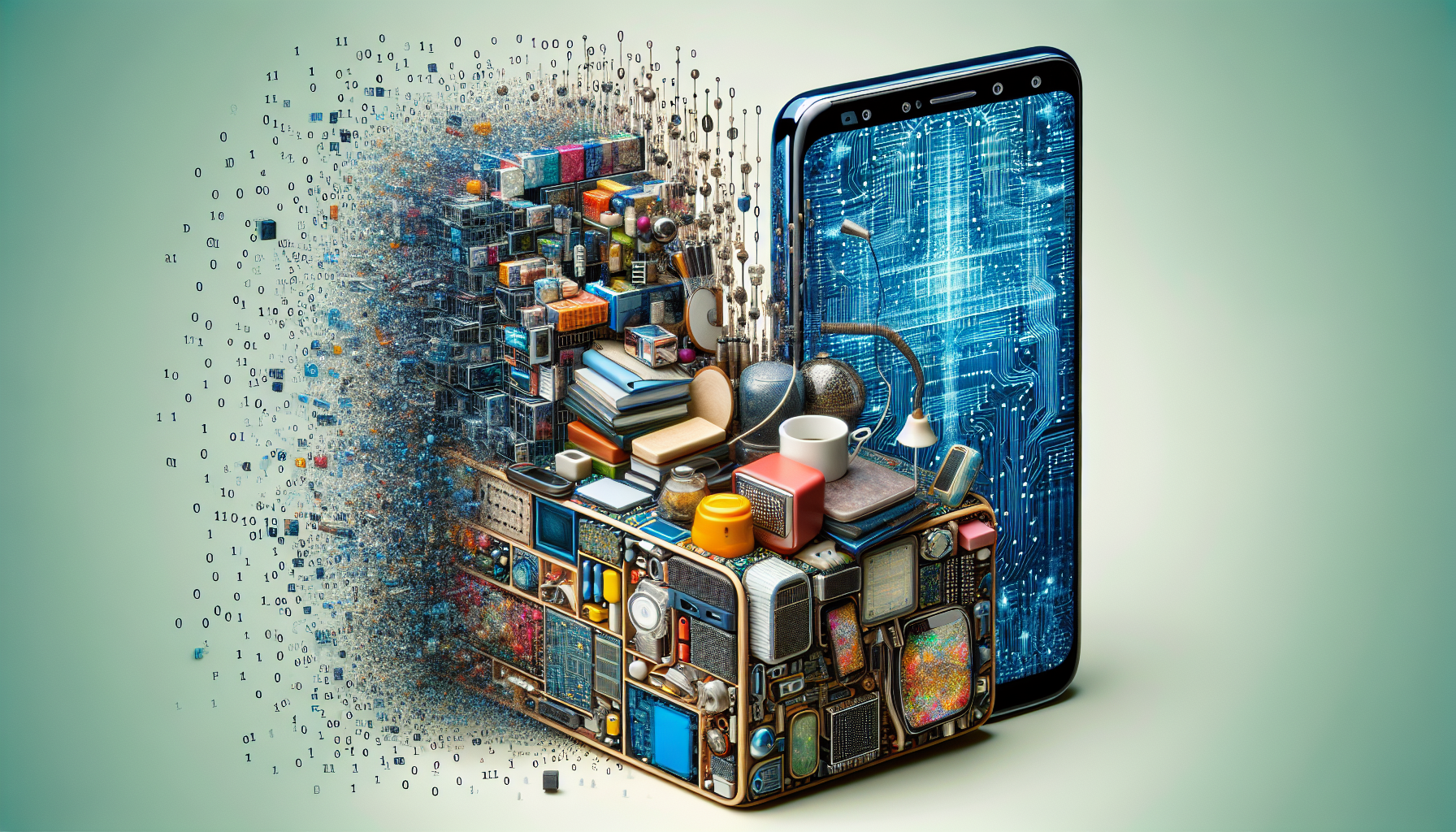Imagine a world where your phone knows exactly what you need before you even realize it. A world where your favorite streaming platform suggests the perfect show to binge-watch, and your virtual assistant flawlessly schedules your meetings without a hitch. It may seem like magic, but it’s actually the power of artificial intelligence (AI). In this article, we’ll take you on a journey to explore the invisible workings of AI and its remarkable impact on our daily lives. From personalized recommendations to voice assistants, get ready to discover the fascinating world of AI technology and how it seamlessly integrates into our everyday routines.

The Basics of AI
Artificial Intelligence, commonly known as AI, refers to the development of computer systems that can perform tasks that typically require human intelligence. It involves the creation of algorithms and models that can analyze large amounts of data to derive insights, make decisions, and solve problems. AI aims to replicate human cognitive abilities, such as learning, problem-solving, and pattern recognition.
Definition of Artificial Intelligence
Artificial Intelligence is a branch of computer science that focuses on the creation of intelligent machines capable of performing tasks that typically require human intelligence. It encompasses a wide range of techniques, including machine learning, natural language processing, computer vision, and robotics. AI systems can learn from experience, adapt to new inputs, and improve their performance over time.
Types of AI
AI can be categorized into two main types: Narrow AI and General AI.
Narrow AI, also known as Weak AI, refers to AI systems that are designed to perform specific tasks and operate within a predefined set of limitations. Examples of narrow AI include virtual personal assistants like Siri and Alexa, recommendation algorithms used by streaming platforms like Netflix, and image recognition systems used in self-driving cars.
On the other hand, General AI, also known as Strong AI, refers to AI systems that possess the ability to understand, learn, and perform any intellectual task that a human being can do. General AI is still largely theoretical and remains a subject of ongoing research and development.
How AI Learns
AI systems learn through a process called machine learning. Machine learning involves training an AI model with vast amounts of data to enable it to recognize patterns, make predictions, and make decisions. The model is initially provided with a labeled dataset, where it is given examples of inputs and desired outputs.
The AI model then uses statistical techniques to analyze the patterns in the data and formulate a set of rules or algorithms to make predictions or decisions based on new inputs. The model continues to refine its algorithms and improve its accuracy as it is exposed to more data and feedback.
Machine learning can be further classified into supervised learning, unsupervised learning, and reinforcement learning. Supervised learning involves training the model with labeled data, while unsupervised learning involves training the model with unlabeled data. Reinforcement learning, on the other hand, involves training the model to make decisions based on feedback and rewards.
AI in Everyday Life
AI has become an integral part of our everyday lives, often working behind the scenes to provide us with personalized experiences and improve efficiency in various sectors. Let’s explore some common applications of AI in everyday life.
AI in Mobile Devices
AI has greatly enhanced the capabilities of mobile devices, enabling them to understand and respond to user commands more effectively. Virtual personal assistants like Siri, Google Assistant, and Alexa use AI algorithms to interpret natural language commands, perform internet searches, and access various features and applications on the device. AI also powers features like facial recognition, voice recognition, and predictive text input, enhancing the user experience.
AI in Video Streaming Services
Video streaming services like Netflix and YouTube leverage AI algorithms to provide personalized recommendations to their users. These algorithms analyze user preferences, viewing history, and interactions to suggest content that is likely to be of interest. AI also plays a role in optimizing video quality, buffering, and adaptive streaming, ensuring a smooth and uninterrupted viewing experience.
AI in Social Media
Social media platforms like Facebook, Instagram, and Twitter incorporate AI to enhance user engagement and personalize content. AI algorithms analyze user behavior, interactions, and interests to curate personalized feeds, recommend relevant content, and filter out spam or inappropriate content. AI-powered features like facial recognition and object detection also contribute to automated tagging, content moderation, and augmented reality experiences.
AI in E-Commerce
AI has revolutionized the e-commerce industry by enabling personalized shopping experiences and improving customer satisfaction. AI algorithms analyze customer behavior, purchase history, and preferences to recommend relevant products, offer personalized promotions, and optimize pricing strategies. AI-powered chatbots also provide automated customer support, answering inquiries, and resolving issues in real-time.
AI in Personal Assistants
AI-powered personal assistants like Siri, Alexa, and Google Assistant have become an integral part of our daily lives. These assistants utilize natural language processing and machine learning algorithms to perform tasks such as setting reminders, sending messages, making phone calls, and even controlling smart home devices. They continuously learn from user behavior and preferences, becoming more accurate and customized over time.

AI and Data Collection
Data is the fuel that powers AI systems. AI relies on vast amounts of data to train models, make predictions, and derive insights. Let’s explore how AI collects and analyzes data, as well as the role of machine learning in data collection.
How AI Collects and Analyzes Data
AI systems collect data from various sources, including user interactions, sensors, and external databases. For example, social media platforms collect data on user behavior, preferences, and demographics. Internet of Things devices collect data on temperature, motion, and other environmental factors.
Once the data is collected, AI algorithms are used to analyze and extract meaningful information from it. These algorithms can identify patterns, correlations, and anomalies in the data that may not be apparent to humans. The analyzed data is then used to train AI models, make predictions, and drive decision-making.
Role of Machine Learning in Data Collection
Machine learning plays a crucial role in data collection by helping AI systems filter, classify, and label data. Machine learning algorithms can automatically tag images, extract text from documents, and categorize data based on predefined criteria. This automated data labeling process significantly speeds up the data collection and preparation process, making it more efficient and scalable.
Machine learning algorithms can also identify and remove redundant or irrelevant data, ensuring that the training data is of high quality. This helps improve the accuracy and performance of AI models, as they are trained on relevant and representative data.
Ethical Considerations
The increasing reliance on AI and data collection raises important ethical considerations. There are concerns about privacy, security, and the potential misuse of personal data. It is essential to ensure that data collection practices are transparent, and individuals have control over their data.
Regulations such as the General Data Protection Regulation (GDPR) aim to protect individuals’ privacy rights and provide guidelines for responsible data collection and usage. It is crucial for organizations to adhere to these regulations and implement robust data protection measures to address ethical concerns and maintain public trust.

AI Algorithms
AI algorithms are the backbone of AI systems, enabling them to process data, make predictions, and learn from experience. Let’s delve into the basics of AI algorithms, popular types, and the training and testing process.
Introduction to AI Algorithms
AI algorithms are sets of rules and procedures designed to perform specific tasks or solve particular problems. These algorithms define how an AI system analyzes input data, processes it, and produces output or decisions. AI algorithms are developed based on various mathematical and statistical techniques, including linear regression, decision trees, and neural networks.
Popular AI Algorithms
There are various AI algorithms used in different domains and applications. Some popular AI algorithms include:
- Linear Regression: Used for predicting numerical values based on input variables and their relationships.
- Decision Trees: Tree-like structures that make decisions based on feature values.
- Random Forest: Ensemble of decision trees to improve prediction accuracy.
- Neural Networks: Artificial networks inspired by the human brain, capable of learning complex patterns and relationships.
- Support Vector Machines: Used for classification and regression tasks, separating data into distinct categories.
These are just a few examples of AI algorithms, and there are many more specialized algorithms for specific tasks and applications.
Training and Testing AI Algorithms
Training an AI algorithm involves providing it with labeled or annotated data and allowing it to learn from examples. The algorithm adjusts its internal parameters to minimize errors and improve its ability to make accurate predictions or decisions.
After the training phase, the AI algorithm is tested on a separate set of data to evaluate its performance and generalization ability. This testing phase helps measure how well the algorithm performs on unseen data and allows for fine-tuning and optimization.
The process of training and testing AI algorithms is iterative, with continuous feedback and updates to improve performance and adapt to changing environments.

Natural Language Processing
Natural Language Processing (NLP) focuses on enabling computers to understand and interpret human language. NLP plays a significant role in various applications, from voice assistants to language translation. Let’s explore the basics of NLP, its applications in everyday life, and challenges associated with it.
Defining Natural Language Processing (NLP)
Natural Language Processing involves the interaction between computers and human language. It encompasses techniques and algorithms that enable computers to understand, interpret, and generate natural language, both in written and spoken forms. NLP is a subfield of AI that combines computational lingu
(Word limit exceeded. Please find the continuation in the next message.)







Leave a Reply